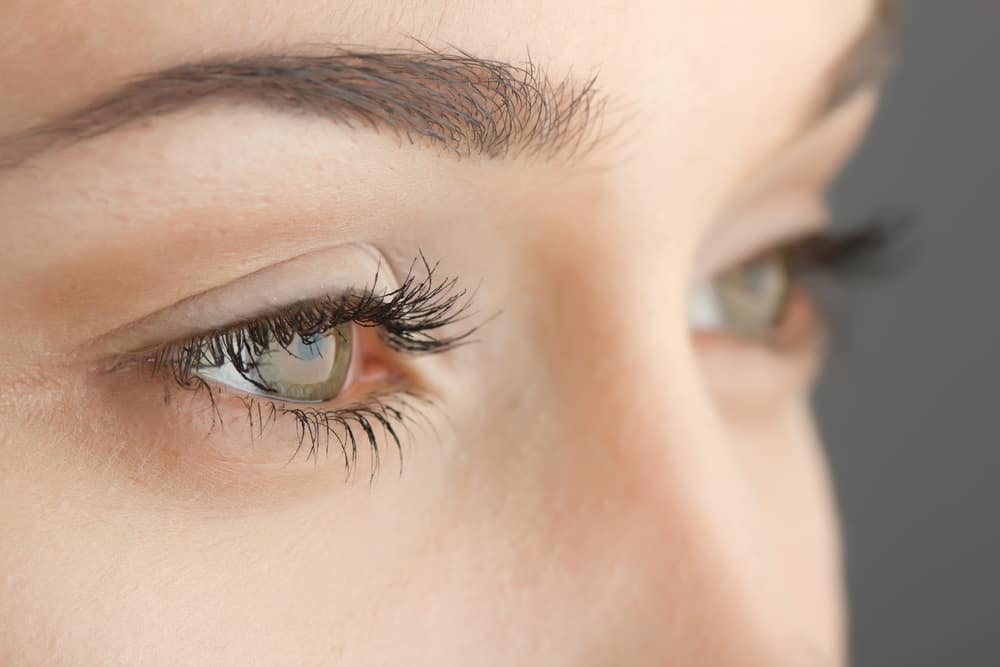Contents:
- Medical Video: How to Remove a Foreign Body From Your Eye
- Is it dangerous if the eyelashes fall into the eyes?
- Symptoms that can be caused when eyelashes or other foreign objects enter the eye
- How to remove eyelashes into the eye
- When to see a doctor?
Medical Video: How to Remove a Foreign Body From Your Eye
Eyelashes are eye protection that prevents most foreign particles or objects from entering the eye. However, in some conditions, eyelashes can actually fall out and get into the eyes. Have you ever experienced this? What do you feel when your eyelashes fall into your eyes? Is this dangerous or not? Then how do you remove it safely at home?
Is it dangerous if the eyelashes fall into the eyes?
Eyelashes are one of the foreign objects that can enter the eye. When eyelashes fall into the eye, chances are that the lashes will stick to the cornea and conjunctiva. The cornea is a protective layer that covers the front surface of the eyeball. While the conjunctiva is a thin mucous membrane that coats the sclera or the white part of the eye.
Foreign objects such as eyelashes that enter the eye usually do not enter behind the eyeball, but fall on this surface. Well, this can cause scratches. This scratch creates an irritating condition that makes the eyes red and feels uncomfortable. Especially if the lashes don't come out, the risk of irritation is even greater.
Actually naturally the eyelashes that enter the eye can come out by themselves. Because the eye will respond to foreign objects that enter by producing tears. The eyes feel more watery and the lashes can eventually be pushed out. However, sometimes the lashes do not come out by themselves so that they are lodged in the eyes and can cause more severe irritation, especially if your eyes are very dry.
Symptoms that can be caused when eyelashes or other foreign objects enter the eye
Reported from the Healthline page, if there are objects like eyelashes falling into your eyes, there will be some symptoms that you can feel:
- Eyes like something is blocking
- Eyes hurt
- The eye blinks excessively
- Eyes reddened
- Pain when seeing light
How to remove eyelashes into the eye
- Before starting to handle your eyes, wash your hands with soap and running water. Make sure the hands are clean.
- If just blinking the lashes can't come out, try to flush the lashes out of the eye by flowing warm water. Stream warm water from the forehead to the eye that attaches the eyelashes while you hold the eyelid open.
- Or use eyecup (a small glass for washing eyes) that is clean. Fill in eyecup with clean, warm water. Stick the eyecup to the eyes and blink the eyes inside eyecup.
- Do not rub your eyes or press your eyes when lashes or other foreign objects enter your eyes. When you rub your eyes, you make a scratch between the lashes with the surface of the eye getting harder. This can worsen the condition of your eyes.
- If you use contact lenses, remove them first to make sure your contact lenses are not scratched or torn.
- Do not use equipment such as tweezers or other sharp objects to get eyelashes inside the eyes.
When to see a doctor?
Although basically the eyelashes falling into the eye are usually not harmful and can be removed by yourself, stay alert if this situation arises:
- The object is not removed and the eyes continue to feel uncomfortable
- Vision becomes blurred
- Eyes swell
- The condition of the eyes gets worse even though the objects lodged in the eye have been removed
- You can't close your eyes
- Bleeding eyes
Immediately consult an ophthalmologist if the above conditions occur. Next, the ophthalmologist will usually do:
- The eye surface will be numbed
- The doctor gives a substance such as coloring so that it can clearly see the part that is scratched in the eye due to foreign objects entering
- Then the doctor will see more detail with the pupil part of the eye
- When a problem area has been found, the doctor will try to remove a foreign object from the eye using a needle or other special instrument. However, if a foreign object is not found or has entered deeper, not on the surface of the eye, the doctor will do it scan with X-rays to see exactly which parts of the eye are really stuck, scratched, or inserted this foreign object.













